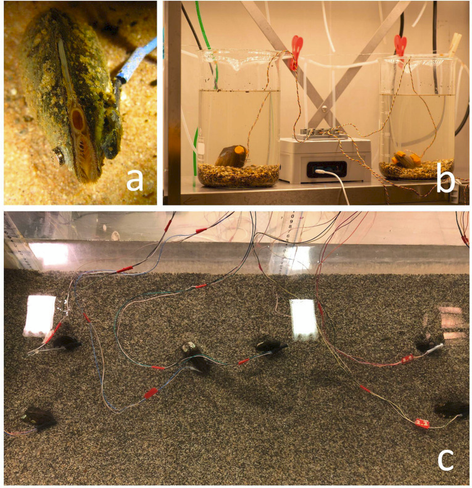The measurement of bivalve shell valve movement is called valvometry. Clams tend to 'clam up' when exposed to a contaminant. Many of those contaminants are also harmful to us, so if we measure the valve movement, it can provide us an early warning of water pollution, much faster than laboratory analyses can be conducted! Water systems in Poland and Germany are particularly famous for applying for this technique, allowing them to shut off water intakes if contamination is detected by the clams, but what pollutants can be monitored this way? In one example, pentachlorophenol, a pesticide toxic to humans can be monitored via mussel valve movement. Concentrations as low as micrograms per liter can be detected by the mussels, which begin closing their shells and rapidly clapping their valves (analogous to coughing). The mussels generally take 3-month shifts before being returned to their native environment. #clamFacts
Figure sources: https://pmc.ncbi.nlm.nih.gov/articles/PMC10714398/
https://link.springer.com/article/10.1007/s10750-005-1203-4


